-
 Bitcoin
Bitcoin $82,268.0001
-4.04% -
 Ethereum
Ethereum $1,777.8015
-5.02% -
 Tether USDt
Tether USDt $0.9997
-0.03% -
 XRP
XRP $2.0017
-5.57% -
 BNB
BNB $584.3181
-3.27% -
 USDC
USDC $0.9999
-0.02% -
 Solana
Solana $113.9101
-10.18% -
 Dogecoin
Dogecoin $0.1582
-7.95% -
 TRON
TRON $0.2338
-1.55% -
 Cardano
Cardano $0.6241
-8.78% -
 Toncoin
Toncoin $3.5629
-12.05% -
 UNUS SED LEO
UNUS SED LEO $9.3926
0.04% -
 Chainlink
Chainlink $12.4716
-8.37% -
 Stellar
Stellar $0.2537
-5.64% -
 Avalanche
Avalanche $18.0808
-5.86% -
 Sui
Sui $2.2582
-8.11% -
 Shiba Inu
Shiba Inu $0.0...01212
-2.66% -
 Hedera
Hedera $0.1562
-6.92% -
 Litecoin
Litecoin $81.9021
-1.77% -
 Polkadot
Polkadot $3.9168
-4.95% -
 MANTRA
MANTRA $6.2584
-0.81% -
 Bitcoin Cash
Bitcoin Cash $296.8025
-3.05% -
 Bitget Token
Bitget Token $4.4990
-1.96% -
 Dai
Dai $0.9999
0.02% -
 Ethena USDe
Ethena USDe $0.9996
-0.03% -
 Monero
Monero $212.8042
-2.13% -
 Pi
Pi $0.5633
-17.59% -
 Hyperliquid
Hyperliquid $11.1531
-17.45% -
 Uniswap
Uniswap $5.7444
-5.64% -
 Aptos
Aptos $5.0383
-5.12%
Risk control skills of candlestick charts in leveraged trading
Candlestick charts are vital for analyzing price movements in leveraged trading, helping manage risks by identifying key patterns like bullish and bearish engulfing.
Apr 01, 2025 at 02:07 pm

Understanding Candlestick Charts in Leveraged Trading
Candlestick charts are a powerful visual tool for analyzing price movements in cryptocurrency markets. They provide insights into buying and selling pressure, momentum, and potential reversals. In leveraged trading, where you control a larger position than your initial investment allows, understanding candlestick patterns is crucial for effective risk management. Misinterpreting these patterns can lead to significant losses, amplified by the leverage multiplier. Therefore, mastering candlestick chart analysis is paramount for successful and safe leveraged trading.
Identifying Key Candlestick Patterns
Several candlestick patterns offer valuable insights into potential market direction. Recognizing these patterns helps in making informed trading decisions and implementing effective risk management strategies.
Bullish Engulfing Pattern: This pattern suggests a potential bullish reversal. It consists of a bearish candlestick followed by a larger bullish candlestick that completely engulfs the previous one. This signals a potential shift from bearish to bullish sentiment.
Bearish Engulfing Pattern: The opposite of the bullish engulfing pattern, this indicates a potential bearish reversal. A bullish candlestick is followed by a larger bearish candlestick that completely engulfs it. This suggests a possible shift from bullish to bearish sentiment.
Hammer: This is a bullish reversal pattern characterized by a small body with a long lower wick. It suggests buying pressure overcoming selling pressure. The hammer's long lower wick indicates buyers stepped in to prevent further price decline.
Hanging Man: This is a bearish reversal pattern similar to a hammer but appears at the top of an uptrend. It indicates potential exhaustion of the uptrend and a possible reversal. The long lower wick suggests buyers failed to sustain the price.
Shooting Star: This is another bearish reversal pattern with a small body and a long upper wick. It signifies selling pressure overcoming buying pressure at the top of an uptrend. The long upper wick shows sellers pushing the price down.
Doji: A doji candlestick has opening and closing prices that are virtually the same, creating a small cross or plus sign. It indicates indecision in the market, a pause in the trend. This can be a precursor to a trend reversal or a continuation.
Leveraged Trading and Position Sizing
Leveraged trading magnifies both profits and losses. Therefore, position sizing is crucial. Never risk more than a small percentage of your trading capital on a single trade, especially when using leverage. A common strategy is to risk no more than 1-2% per trade. This limits potential losses even if the trade goes against you. Careful position sizing is the cornerstone of risk management in leveraged trading.
Stop-Loss Orders: Your Safety Net
Stop-loss orders are essential for risk management in leveraged trading. They automatically sell your position when the price reaches a predetermined level, limiting potential losses. Always use stop-loss orders to protect your capital. Place them strategically, considering candlestick patterns and support/resistance levels. Avoid placing them too tight, as sudden market movements can trigger them prematurely.
Take-Profit Orders: Securing Your Gains
Take-profit orders automatically sell your position when the price reaches a predetermined profit target. These orders help you lock in profits and prevent giving back gains. They are used in conjunction with stop-loss orders to manage risk and reward effectively. The placement of take-profit orders should be based on your trading strategy and risk tolerance.
Using Support and Resistance Levels
Support and resistance levels are crucial in identifying potential price reversal points. Support levels represent price areas where buying pressure is expected to outweigh selling pressure, preventing further price declines. Resistance levels are the opposite, where selling pressure is expected to dominate. Candlestick patterns often form around these levels, providing confirmation signals.
Risk Management Techniques with Candlestick Charts
Combining candlestick patterns with support and resistance levels enhances risk management. For example, a bearish engulfing pattern forming near a resistance level provides a strong bearish signal, suggesting a potential short position. Conversely, a bullish engulfing pattern near a support level may signal a long position. Always consider multiple factors before making a trading decision.
Avoiding Emotional Trading
Emotional trading is a significant risk factor in leveraged trading. Fear and greed can cloud judgment, leading to poor decisions. Stick to your trading plan, regardless of market fluctuations. Avoid impulsive trades based on emotions. Discipline and patience are key to success in leveraged trading.
Backtesting and Paper Trading
Before using leverage with real money, practice with a demo account or backtest your strategies. Backtesting involves testing your strategies on historical data to evaluate their effectiveness. Paper trading simulates real trading without risking real capital. This allows you to refine your skills and develop confidence before entering the live market.
The Importance of Continuous Learning
The cryptocurrency market is constantly evolving. Continuous learning is essential to stay ahead of the curve and adapt to changing market conditions. Stay updated on market trends, new trading strategies, and risk management techniques. Regularly review your trading performance and identify areas for improvement.
Frequently Asked Questions
Q: What is the best candlestick pattern for leveraged trading?
A: There's no single "best" pattern. The effectiveness of a candlestick pattern depends on various factors, including market context, support/resistance levels, and overall market sentiment. Combining multiple patterns and indicators is usually more effective than relying on a single pattern.
Q: How much leverage should I use in cryptocurrency trading?
A: The amount of leverage you should use depends on your risk tolerance and trading experience. Beginners should start with low leverage (e.g., 2x or 3x) and gradually increase it as they gain experience. High leverage significantly amplifies both profits and losses, increasing the risk of substantial losses.
Q: Can I use candlestick charts alone for leveraged trading decisions?
A: While candlestick charts provide valuable insights, they shouldn't be the sole basis for leveraged trading decisions. Combining them with other technical indicators, fundamental analysis, and risk management techniques is crucial for making informed decisions.
Q: What is the role of stop-loss orders in leveraged trading?
A: Stop-loss orders are critical for risk management in leveraged trading. They limit potential losses by automatically selling your position when the price reaches a predetermined level. They are essential for protecting your capital, especially when using leverage.
Q: How can I improve my risk management skills in leveraged trading?
A: Improving risk management involves several steps: thoroughly understanding candlestick patterns, using stop-loss orders consistently, practicing proper position sizing, and avoiding emotional trading. Continuous learning and backtesting are also crucial.
Disclaimer:info@kdj.com
The information provided is not trading advice. kdj.com does not assume any responsibility for any investments made based on the information provided in this article. Cryptocurrencies are highly volatile and it is highly recommended that you invest with caution after thorough research!
If you believe that the content used on this website infringes your copyright, please contact us immediately (info@kdj.com) and we will delete it promptly.
- Jack Dorsey Warns Bitcoin (BTC) Could Lose Its Open Ethos as Institutional Investment Grows
- 2025-04-03 22:45:11
- Kadena Launches Chainweb EVM with 20 New EVM-Compatible Chains
- 2025-04-03 22:45:11
- Currently, Shiba Inu (SHIB) is trading at $0.00001211 after experiencing a 1.65% decrease in the last 24 hours and a 5.03% decrease over the past 30 days. These figures show that while there is short-term selling pressure, the overall medium-term trend sh
- 2025-04-03 22:40:12
- Supermicro Systems with the NVIDIA B200 Outperform the Previous Generation of Systems with 3X the Token Generation Per Second
- 2025-04-03 22:40:12
- Supermicro Systems with the NVIDIA B200 Outperformed the Previous Generation of Systems by Delivering 3X the Token Generation Per Second
- 2025-04-03 22:35:12
- Kevin O'Leary and Dave Portnoy Join the Lineup of Speakers at Consensus Toronto 2025
- 2025-04-03 22:35:12
Related knowledge

How to use the three crows candlestick combination to determine the market top?
Apr 03,2025 at 03:18pm
Three Black Crows are a classic K-line combination form that is often used to judge the top of the market in technical analysis. This pattern consists of three consecutive negative lines, the opening price of each negative line is within the entity of the previous K-line, and the closing price gradually decreases. This pattern usually appears at the end...
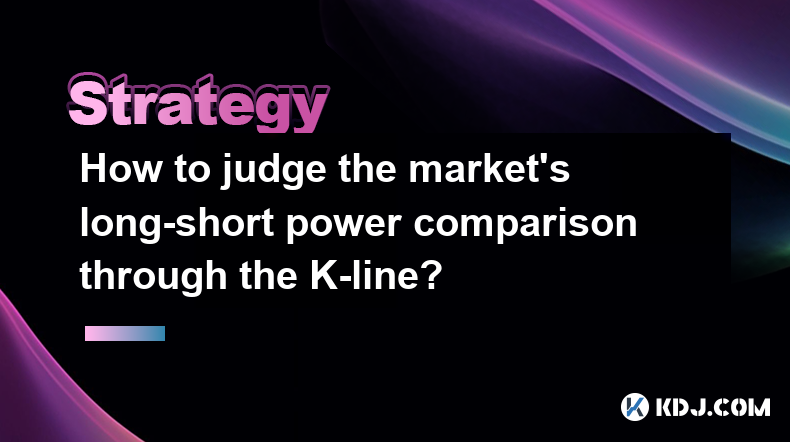
How to judge the market's long-short power comparison through the K-line?
Apr 03,2025 at 02:39pm
Judging the market's long-short power comparison through the K-line is an important skill in technical analysis. The K-line chart can not only show price changes, but also reflect the emotions and power comparison of market participants. This article will introduce in detail how to judge the market's long-short power comparison through K-lines. ...
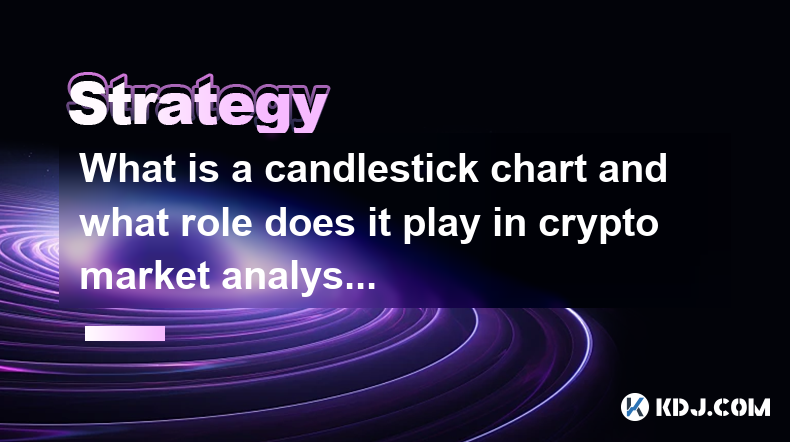
What is a candlestick chart and what role does it play in crypto market analysis?
Apr 03,2025 at 02:26pm
K-line chart, also known as candle chart, is a form of chart used to display changes in the price of financial products. In the cryptocurrency market, K-line charts are widely used to analyze the price trends of digital assets such as Bitcoin and Ethereum. This article will introduce in detail the basic structure, types of K-line charts and their specif...
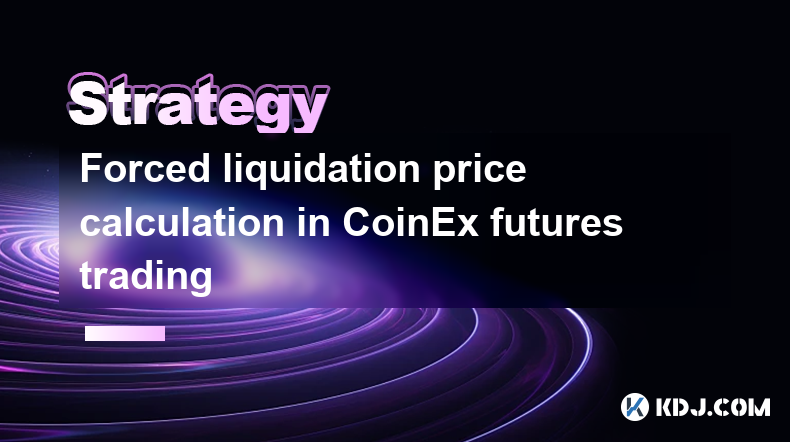
Forced liquidation price calculation in CoinEx futures trading
Apr 03,2025 at 05:35am
In CoinEx futures trading, understanding the forced liquidation price is crucial for managing risk and maintaining your positions. The forced liquidation price is the point at which your position is automatically closed to prevent further losses. This mechanism is designed to protect both the trader and the platform from negative account balances. The c...
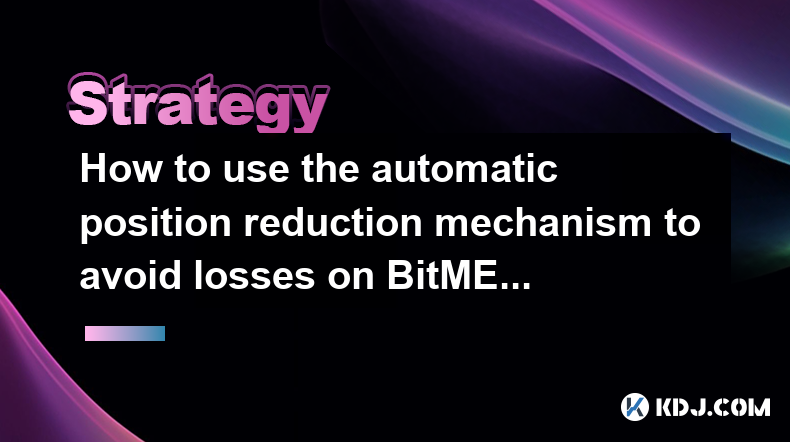
How to use the automatic position reduction mechanism to avoid losses on BitMEX
Apr 03,2025 at 02:56am
Using the automatic position reduction mechanism on BitMEX can be a strategic approach to managing risk and avoiding potential losses in the volatile cryptocurrency market. This feature, also known as Auto Deleveraging (ADL), is designed to help traders by automatically reducing their positions in certain conditions. To effectively use this mechanism, i...
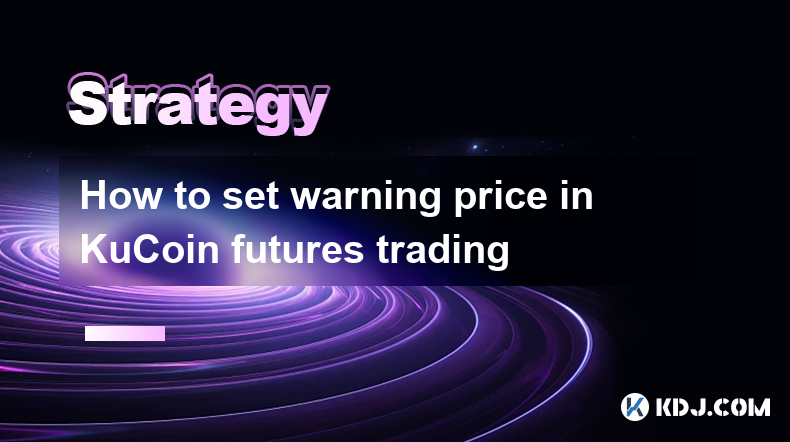
How to set warning price in KuCoin futures trading
Apr 03,2025 at 08:14am
Setting a warning price in KuCoin futures trading is an essential feature for managing risk and staying informed about market movements. This tool allows traders to receive notifications when the price of a futures contract reaches a specific level, helping them make timely decisions. To set a warning price, you need to navigate to the futures trading i...

How to use the three crows candlestick combination to determine the market top?
Apr 03,2025 at 03:18pm
Three Black Crows are a classic K-line combination form that is often used to judge the top of the market in technical analysis. This pattern consists of three consecutive negative lines, the opening price of each negative line is within the entity of the previous K-line, and the closing price gradually decreases. This pattern usually appears at the end...

How to judge the market's long-short power comparison through the K-line?
Apr 03,2025 at 02:39pm
Judging the market's long-short power comparison through the K-line is an important skill in technical analysis. The K-line chart can not only show price changes, but also reflect the emotions and power comparison of market participants. This article will introduce in detail how to judge the market's long-short power comparison through K-lines. ...

What is a candlestick chart and what role does it play in crypto market analysis?
Apr 03,2025 at 02:26pm
K-line chart, also known as candle chart, is a form of chart used to display changes in the price of financial products. In the cryptocurrency market, K-line charts are widely used to analyze the price trends of digital assets such as Bitcoin and Ethereum. This article will introduce in detail the basic structure, types of K-line charts and their specif...

Forced liquidation price calculation in CoinEx futures trading
Apr 03,2025 at 05:35am
In CoinEx futures trading, understanding the forced liquidation price is crucial for managing risk and maintaining your positions. The forced liquidation price is the point at which your position is automatically closed to prevent further losses. This mechanism is designed to protect both the trader and the platform from negative account balances. The c...

How to use the automatic position reduction mechanism to avoid losses on BitMEX
Apr 03,2025 at 02:56am
Using the automatic position reduction mechanism on BitMEX can be a strategic approach to managing risk and avoiding potential losses in the volatile cryptocurrency market. This feature, also known as Auto Deleveraging (ADL), is designed to help traders by automatically reducing their positions in certain conditions. To effectively use this mechanism, i...

How to set warning price in KuCoin futures trading
Apr 03,2025 at 08:14am
Setting a warning price in KuCoin futures trading is an essential feature for managing risk and staying informed about market movements. This tool allows traders to receive notifications when the price of a futures contract reaches a specific level, helping them make timely decisions. To set a warning price, you need to navigate to the futures trading i...
See all articles























































































